
Uncovering Regional Charms and Using Stories to Transform Them into New Strengths.
A Workshop with Next-generation Regional Leaders.
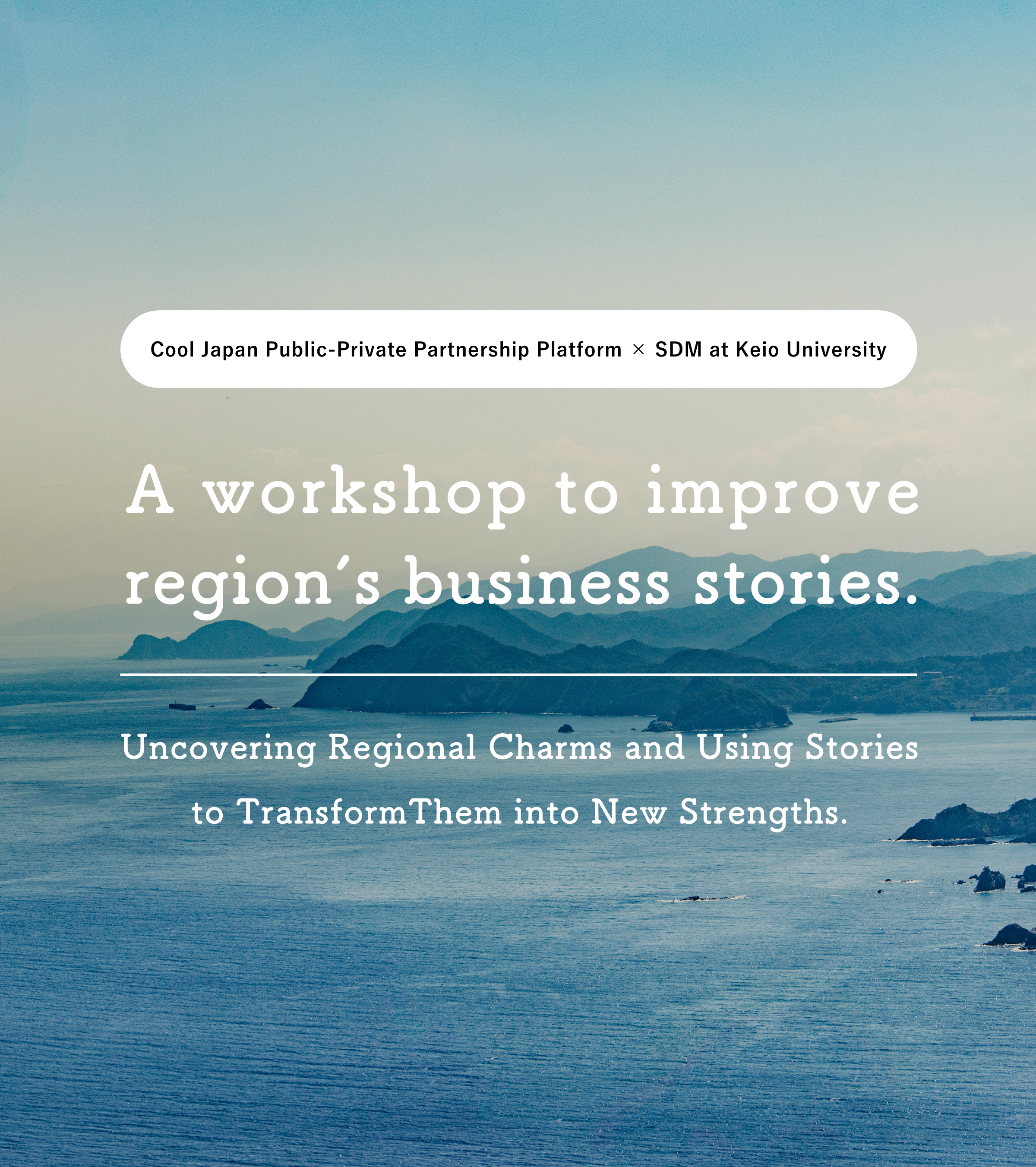
On March 13, 2024, the Cool Japan Public-Private Partnership Platform (CJPF) and the Graduate School of System Design and Management (SDM) from Keio University jointly hosted their first workshop. The theme was “Using stories to transform regional businesses into new strengths.” The venue for the workshop was POTLUCK YAESU in Yaesu Midtown, a place for interaction among individuals working to create value in Japan’s different regions. Thirty two individuals of varying ages and occupations from across Japan, but all with an interest in regional revitalization, were in attendance. Part One featured special lectures by two regional leaders CJPF has encountered and a panel discussion with Cool Japan producers. In Part Two, participants were able to see first hand a framework that was created by analyzing the business and PR strategies of nationwide businesses interviewed by CJPF to date. The workshop provided a valuable opportunity for participants to discover new things, meet new people, and utilize their findings in their own regional activities in the future.
Part One began with the special lectures,
which were then followed by the panel discussion.
Part One began with the special lectures, which were then followed by the panel discussion. The lectures in Part One were courtesy of Marika Tazawa of KURABITO STAY in Saku City, Nagano Prefecture, and Yuya Ota of SETOUCHI JOZOJO Winery in Mihara City, Hiroshima Prefecture. Both have returned to their hometowns from Tokyo to manage businesses that uncover local charms and that have revitalized the local region.
Marika Tazawa
President and CEO, KURABITO STAY, inc.
■Website:https://kurabitostay.com/en/about/
■CJPF article:Become a Kurabito. Enhancing the Value of Japanese Sake through a New Form of Sake Brewery Tourism
A new form of sake brewery tourism in which people can participate in authentic sake brewing
Tazawa originally worked at a travel company and wine trading company before getting married, having a child, and temporarily retiring. After participating in the launch of a tourism bureau in her hometown of Komoro City, Tazawa stumbled upon the more than 300-year-old regional sake brewing industry in the neighboring Saku City.
In 2020, having renovated a century-old lodging previously used by sake brewers, she opened KURABITO STAY, a facility where overnight guests can experience the real work of a sake brewer and the sake-brewing process. Today, the facility is visited by numerous tourists from both Japan and overseas, and has made significant contributions to the regional economy by attracting customers to the area.
“To sustain the business, it is important to create a tourism model in which rather than attracting 100 people for one-hour stays, we attract just one person who is happy to stay for 100 hours. We are working to create a sharing framework in which KURABITO STAY attracts guests to the area, before the guests then travel around the region and visit regional restaurants, for example. Our accommodation fees are 59,000 yen for one night, two days, and 99,000 yen for two nights, three days. Rather than a get-what-you-pay-for approach, we are aiming to create a tourism framework in which everyone is happy by providing high-quality services through which the region is fairly compensated and customers are highly satisfied.
Yuya Ota
Representative Director, SETOUCHIJOZOJO Co., Ltd.; Representative Director, forC Inc.
Communicating the Setouchi terroir through co-creation with regional producers
■Website:https://setouchijozojo.jp/
■CJPF article:Creating New Value—the Setouchi Terroir
Ota is originally from Mihara City in Hiroshima Prefecture. After graduating from a university in Tokyo and working at a consulting company, in 2009 he established forC Inc. Then, in 2019 he set up SETOUCHIJOZOJO Co., Ltd. The theme for his work is to carry forward primary industries from the Setouchi area to the next generation.
“In my work to support regional branding activities, I discovered that in every region, primary industries are in decline. On the other hand, food is one of the most enjoyable parts of tourism. I wondered whether I could fill this gap and enrich these regions. Some people may not know, but Okayama Prefecture is the third highest producer of grapes in Japan, and Hiroshima Prefecture is the tenth. The Setouchi area is thus a flourishing grape-producing region. Of all the different alcohols, wine is the best expression of a region’s terroir. By working with producers of each regions to make alcohol, we are communicating the terroir of those regions both in Japan and overseas. In addition, we are providing grape seedlings to producers and purchasing the entire harvest to ensure stable income levels, and turning former salt farms but now abandoned land into in-house farms. In these and other ways we are working alongside local regions.”

The panel discussion featured
Tazawa, Ota, and Oya Koc.
The panel discussion featured Tazawa, Ota, and Oya Koc, 17-year resident of Japan, Cool Japan producer, and founder of a translation app service that can handle 163 different languages. The host was Tsuyoshi Hirose of SDM at Keio University, an individual involved with the development of the framework featuring in Part Two.
Having listened to the lectures by Tazawa and Ota, Koc said the following about the charms of regional businesses from her perspective as a foreign national. “There is still a huge amount of untapped potential in terms of charms and culture throughout Japan. The key is how these regions can communicate these qualities in a way that resonates with travelers from overseas. In this sense, the authentic experiences offered by KURABITO STAY and its approach to finding just one person to stay for 100 hours as opposed to attracting 100 people to stay for just one hour, are very important in increasing the number of people who fall for Japan. SETOUCHI JOZOJO, on the other hand, is engaged in incredibly valuable efforts to co-create and bring shape to regional charms, including regional primary industries.”
During the discussion, Tazawa touched upon three strengths required of regional leaders. “First, there are many landscapes and industries across Japan that may appear ordinary to locals, but that are entirely unique charms to certain parts of Japan when seen through the eyes of someone from overseas. Regional leaders must be able to pick up on these elements. Second, they must be able to work out how to transform these charms into products and services that customers will be happy to pay a price for, and provide them. Third, they must have the ability to sustain the resulting business. These three abilities are something that I am constantly working to improve.”
Ota, on the other hand, emphasized the importance of diverse perspectives and regional co-creation. “I think it’s important to look at one thing from ten different perspectives. A different look at something can significantly increase the scope of what you can do. Moreover, no matter how small, it’s important to properly return value to the people who support your activities. In this way, you can build a relationship through which locals from the region continue to offer you support.”
“In Japan there is currently an overwhelming lack of storytelling,” says Koc. “While I’m sure there are many regions developing tourism content using local history and culture, for example, I don’t think this content is being developed in a way that resonates with people overseas. This is what those of us involved with Cool Japan are working to improve, but there is still lots of work to do. If customers from overseas can experience something entirely unique to the country they are visiting, they will be left with an even greater impression than otherwise. We must therefore work to increase these kinds of experiences.”
Tazawa goes on, “Japanese people are both earnest and reserved, and so as Koc says, even though we might have a story, we are not very good at telling it. To overcome this hurdle, we need something to give us confidence. As one example of overseas co-creation, when foreign visitors come to Saku and tell us how wonderful a place it is, it brings energy to the region and enables us to restore a sense of confidence and pride.”
Ota also talks about regional co-creation, saying, “Creating SETOUCHI JOZOJO has increased the number of visitors from outside the prefecture, and at the same time connected us with leading chefs, sommeliers, and producers. Seeing these people happy with the work we are doing gives us the motivation to go and do something new. We have just begun a new collaborative project in which guests depart from the winery and board a private cruiser, stopping at various islands to stay overnight in traditional old houses. For the captain of the boat, we have hired a former paramedic who is used to the seas at nighttime. Our aim is to make this into an attractive proposition for customers while making use of local employment and new systems.”
Koc wraps up the fascinating discussion with a proposal: “Earlier, Tazawa spoke about sharing customers. The horizontal sharing of business’s individual content can lead to co-creation and enhance experiences for customers from overseas. It would be great if we could build a co-creation framework in which everyone involved is satisfied. It will also be important to create transport systems that make it easy to visit these regions and travel between them.”

A workshop to improve
region’s business stories.
The program in Part Two made use of a framework that was jointly developed by CJPF and SDM at Keio University to improve region’s business stories. Participants were able to see how to engage in every process from organizing the charms of businesses currently being promoted, or those they wish to pursue in the future, to creating stories using these charms. In the program, stories were defined as mechanisms to appropriately communicate the qualities of products and services, or the value and thoughts behind a business, to overseas customers through the internet or other means.
Program participants were from various parts of Japan, including Tokyo, Nagoya, Osaka, and Iwate, of varying ages, from teens to those in their 60s, and included students, company executives, and freelancers. All had an interest in regional revitalization. Participants split into six groups to tackle the following four parts of the program.
① Review of own business – Organizing the business from three perspectives: central products or services, providers, and regions
② Consideration of business charms – Expressing the business’s charms from the above three perspectives
③ Establishment and analysis of target customers – Envisaging customers you most want to communicate products and services to
④ Design of efficient communication methods – Imagining the experience you want to provide and thinking about the catchphrases and key visuals to communicate
Each individual shared their ideas with those in their group and refined them using the opinions of other participants. There were many occasions when the more experienced individuals smiled at the refreshing suggestions of younger participants, and when the younger participants would nod as they received expert advice from those more experienced. The program became more lively and energetic as it went on, while it also provided an opportunity to spark new collaborations, with some participants suggesting to others that they work together, and others offering for help with certain businesses.
Leading the program was Makoto Yamasaki from SDM at Keio University, and he wrapped up proceedings with the following comment: “As businesses and markets undergo change, as will the required charms and methods of expression. I look forward to your ongoing exploration and dialogue.”
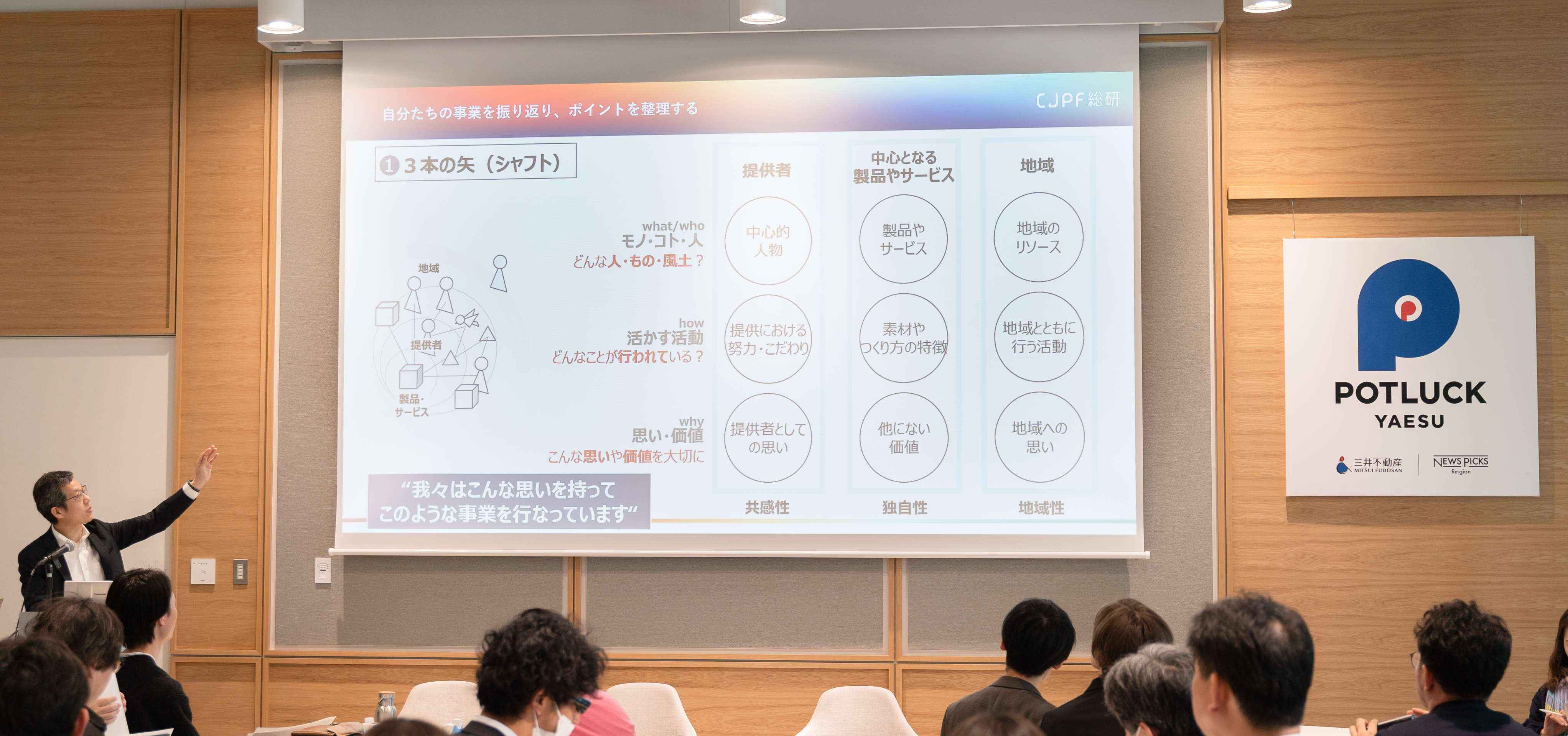
We hope to be able to create destinations in each region
that are attractive for people across the world.
Over approximately three years, CJPF has conducted interviews with businesses across Japan who have refined local charms, communicated them as stories, and attracted numerous tourists from Japan and overseas to revitalize their respective regions. This workshop was set up to encourage as many next-generation leaders as possible to develop regional charms for the future. Moving forward, by increasing opportunities like this and connecting businesses and regions, we hope to facilitate the development and communication of charms that are unique to regions throughout Japan. In doing so, we hope to be able to create destinations in each region that are attractive for people across the world. We will continue with our activities as we work to create a Cool Japan in which regions and people play a leading role.

Workshop Graphic Recording
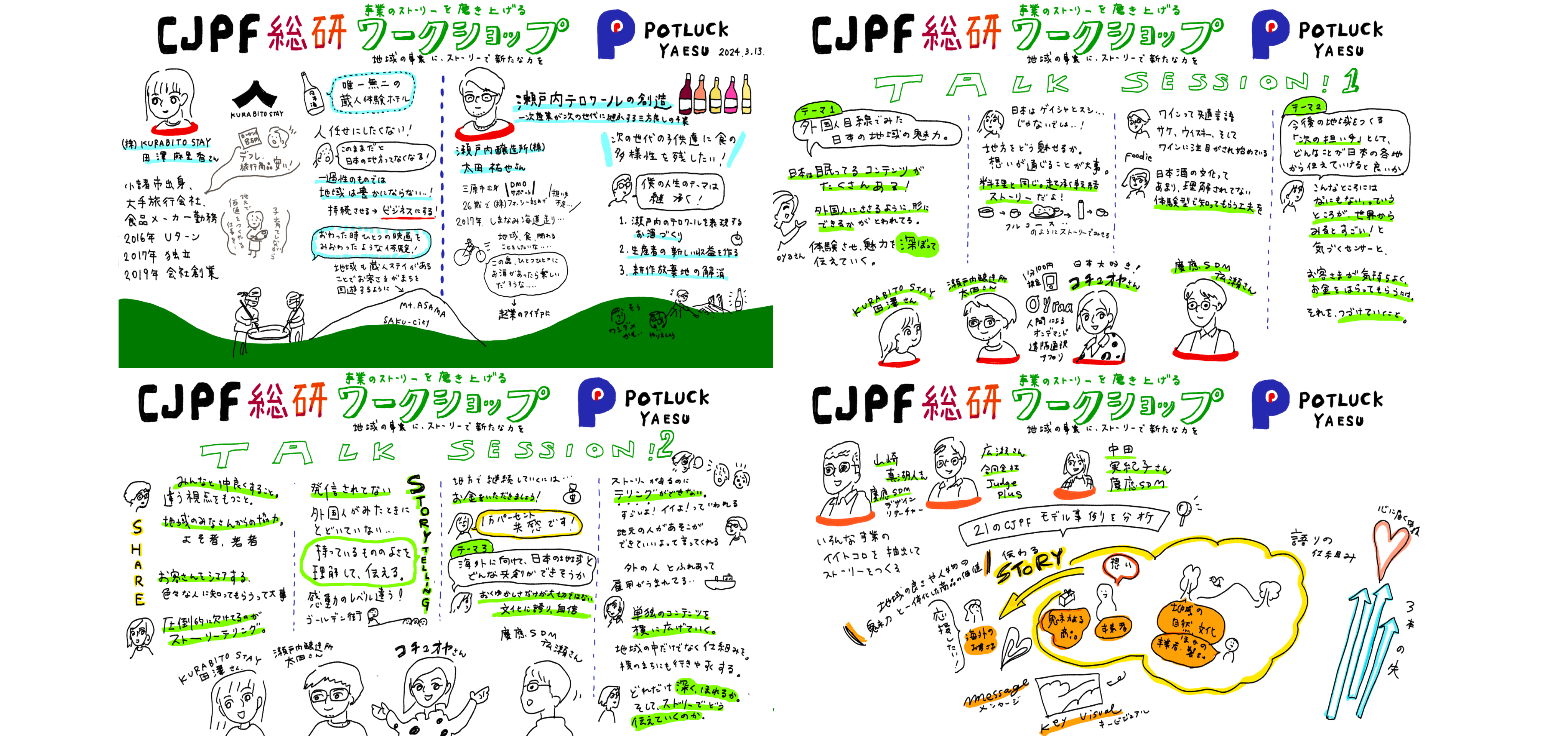
 Speaker Profiles
Speaker Profiles
-
Marika Tazawa
After graduating from university, Marika Tazawa joined a travel company before going to work in sales at a wine trading company. Having left work to become a full-time housewife, in 2016 she returned to her hometown in Nagano Prefecture to help revitalize the area, assisting with the establishment of the Komoro Tourism Bureau. She then opened a business as a tourism location planner. In 2018, she won the Grand Prize in the Yume Awards in Komoro as a social business entrepreneur. In February 2019, she received the Grand Prize in the nationwide Yume Awards. In 2020, she established KURABITO STAY, inc., and has since successfully been attracting many customers from overseas to Saku City.
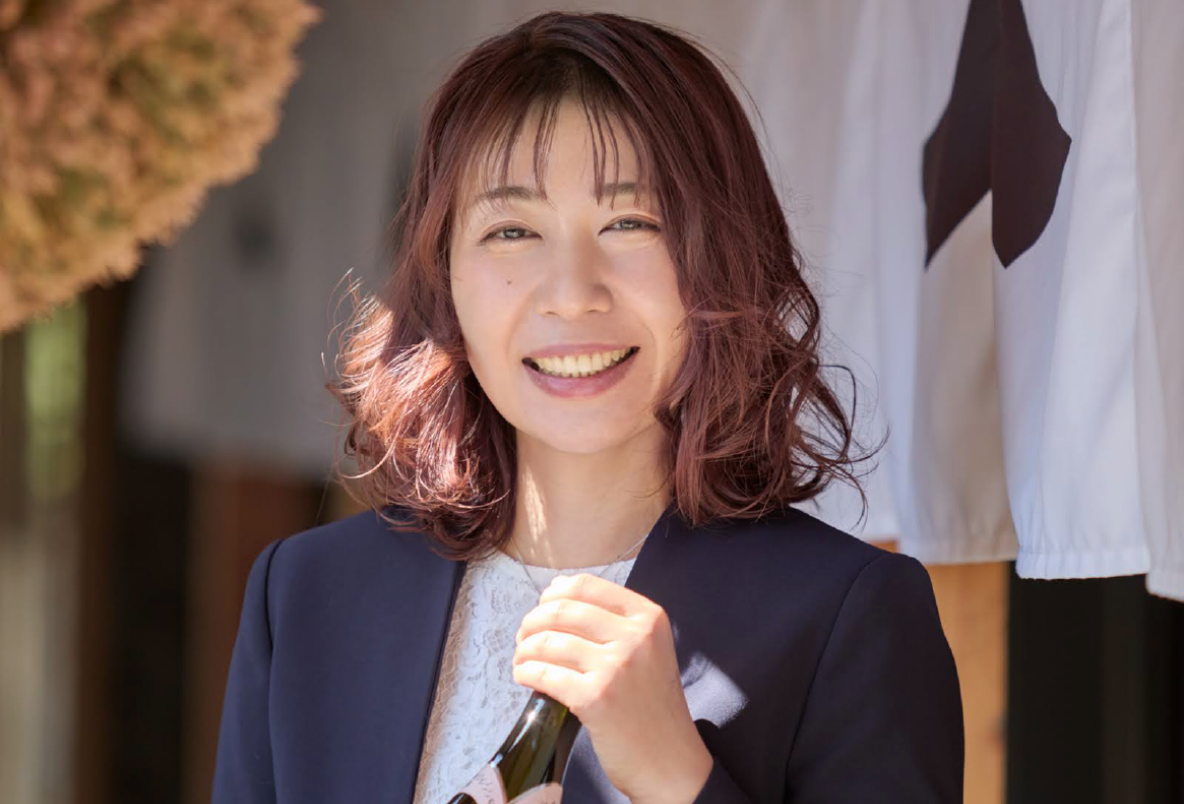
-
Yuya Ota
Born in Mihara City in Hiroshima Prefecture, Yuya Ota moved to Tokyo to study at university. At the age of 25 he set up forC, offering consulting services for regional development. With a desire to help solve the issues facing regional communities, in 2019 Ota set up SETOUCHIJOZOJO Co., Ltd. based on the “Wine and Wineries that Travel in Setouchi” concept. Through SETOUCHI JOZOJO, Ota’s aim is to pair wine made in various producing regions in Setouchi with local cuisines to showcase the area’s terroir both inside and outside Japan. He continues to work to carry forward elements of local agriculture and food cultures to solve regional issues.
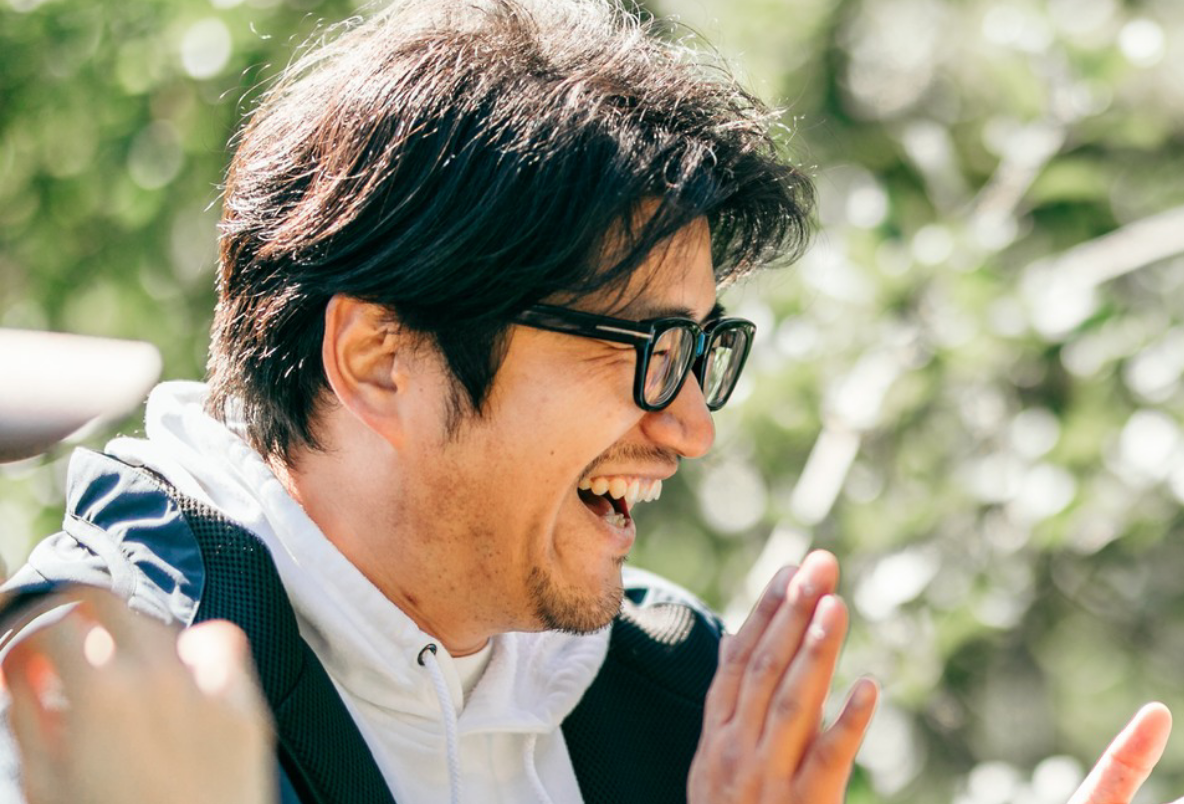
-
Oya Koc
Oya Koc was born in Turkey, and moved to Japan in 2006 to take up an internship at a semiconductor manufacturer in Minakuchi Cho, Kouga-shi, in Shiga Prefecture. Falling in love with Japan, Koc went on to study and graduate from the School of Engineering at the University of Tokyo before joining a consulting firm. She became a Japanese citizen in 2017 and in the same year set up Oyraa, Inc., managing a translation app that can call upon around 2,000 interpreters on demand in 153 countries. Since 2018 she has been working as a Cool Japan producer. Today, she continues working to promote multicultural communities and societies where locals can live alongside and work with foreign nationals.

Answers to questions
CJPF LIVEにつきまして、皆様より頂戴いたしました質問や回答につきましてご回答させていただきます。
-
実際にAIによるメニュー開発など、テクノロジーを活用した食の事例はあるんでしょうか?まだ施策段階ではありますが、ビーガンの領域において、いくつかの先進事例はあります。
-
実際にAIによるメニュー開発など、テクノロジーを活用した食の事例はあるんでしょうか?まだ施策段階ではありますが、ビーガンの領域において、いくつかの先進事例はあります。
-
実際にAIによるメニュー開発など、テクノロジーを活用した食の事例はあるんでしょうか?まだ施策段階ではありますが、ビーガンの領域において、いくつかの先進事例はあります。
-
実際にAIによるメニュー開発など、テクノロジーを活用した食の事例はあるんでしょうか?まだ施策段階ではありますが、ビーガンの領域において、いくつかの先進事例はあります。
-
実際にAIによるメニュー開発など、テクノロジーを活用した食の事例はあるんでしょうか?まだ施策段階ではありますが、ビーガンの領域において、いくつかの先進事例はあります。
